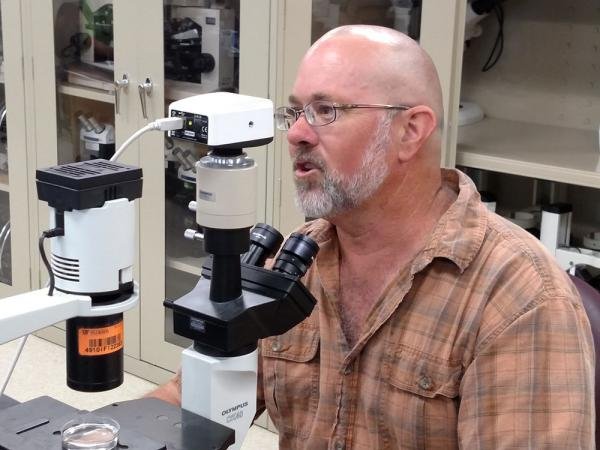Anyone who has managed warm-season turf on a golf course already knows how devastating nematodes can be. What they might not be aware of is the extent of the damage they can cause nationwide.
 Conservative estimates put nematode damage in warm-season turf at north of $50 million annually. Often, however, nematode damage is misdiagnosed, perhaps as a fungal disease. Other times, damage can be caused by both disease and pest. According to University of Florida nematologist Billy Crow, Ph.D., (shown at right) root damage caused by sting nematodes can create an optimal environment for fungal diseases, such as Pythium.
Conservative estimates put nematode damage in warm-season turf at north of $50 million annually. Often, however, nematode damage is misdiagnosed, perhaps as a fungal disease. Other times, damage can be caused by both disease and pest. According to University of Florida nematologist Billy Crow, Ph.D., (shown at right) root damage caused by sting nematodes can create an optimal environment for fungal diseases, such as Pythium.
Left to their own devices, nematodes can wipe out entire areas on warm-season turf on putting green, so if these microscopic worms are suspected of causing damage, then it is critical to get the diagnosis correct and put the correct curative measures in place.
Crow says there is a science to sampling for nematodes. The country's leading voice in nematology says take about 16 samples in a back-and-forth pattern across the affected area. Doing so helps ensure randomly capturing enough nematodes.
Taking samples from one area, Crow said, does not provide an accurate view of what is happening beneath the surface.
"On healthy grass, because we don't know where these nematodes tend to occur because they're going to be unevenly distributed in clumps," Crow said. "We don't know where these clumps are," Crow said. "So what you're going to do is you're going to go across the area, the green, the fairway, or the tee, in more of a zig-zag pattern, and taking samples as you're going along in the zig-zag so we're getting the average nematode population density across the areas."
Crow's nematode sampling advice was the subject of a recent video distributed by Syngenta.
In the video, Crow also recommends not sampling areas where damage is overly obvious, i.e., areas of dead turf or bare ground.
"We wouldn't want to take a nematode sample there because there's no grass. So nematode populations are going to be low because these nematodes have to feed on live turf, so we want to stay away from the really bad spots," he said. "I try to concentrate on areas where the grass was sick, (but) where it wasn't dead."
The point is to provide the lab with enough accurate samples so the problem is properly diagnosed, said Crow, who has seen dried and useless samples arrive at his lab in Gainesville in everything from plastic containers to brown paper lunch sacks.
Samples should be taken from a depth of 3 to 4 inches.
"Greens, 3 inches, fairways and tees, down to 4 inches," he said. "In that range is going to be where most of the nematodes are."
He recommends placing the samples, about 16 cores, in a plastic bag and getting them out of direct sunlight as soon as possible. It also is important to store them in an air-conditioned room until they are shipped - ideally within 24 hours of sampling - so they do not dry out.
"The longer these samples are in transit," he says, "generally the lower the recovery gets."


